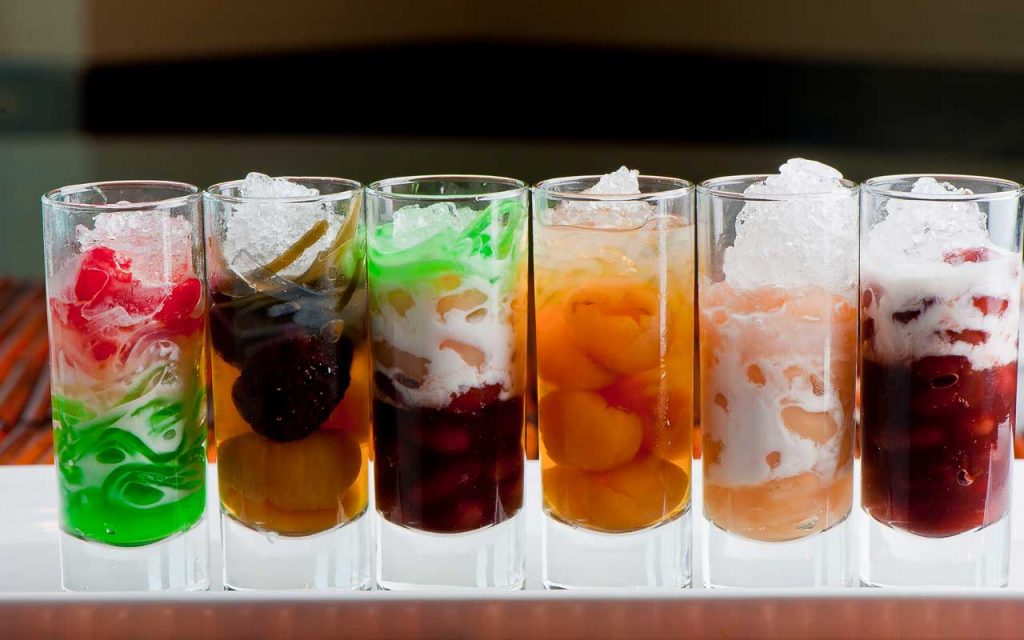Vietnamese Desserts: A Sweet Journey into Vietnamese Culinary Delights
Vietnamese cuisine is renowned for its diverse flavors, vibrant ingredients, and mouthwatering dishes. While savory dishes often steal the spotlight, Vietnamese desserts offer a delightful ending to any meal. From refreshing treats to indulgent sweets, Vietnamese desserts showcase the unique blend of flavors and cultural influences that define Vietnamese culinary traditions. In this article, we will explore the world of Vietnamese desserts, diving into their origins, popular varieties, key ingredients, and serving suggestions. Get ready to satisfy your sweet tooth and embark on a delectable journey through the realm of Vietnamese desserts.

Glucotinous rice balls with ginger syrup dessert
I. The Origins and Cultural Significance of Vietnamese Desserts
Vietnamese desserts have a rich history deeply rooted in the country's culinary traditions and cultural heritage.
Vietnamese cuisine draws inspiration from various sources, including Chinese, French, and Southeast Asian influences.
The desserts reflect this cultural amalgamation and the use of local ingredients.
They play a significant role in Vietnamese celebrations and are often associated with festivals and special occasions.
Vietnamese desserts are known for their balance of flavors, delicate textures, and visual appeal, making them an integral part of Vietnamese gastronomy.
II. Popular Varieties of Vietnamese Desserts
Vietnamese desserts offer a wide range of flavors and textures, catering to various preferences. Here are some popular varieties:
1. Che: Che is a broad term for Vietnamese sweet soups or puddings. It comes in numerous flavors and forms, such as che ba mau (three-color dessert) with layers of mung beans, black-eyed peas, and jelly, or che chuoi (banana and coconut milk dessert) with soft bananas in a creamy coconut milk base.
2. Banh: Banh refers to a variety of Vietnamese sweet cakes and pastries. Banh da lon (pandan layer cake), banh bao (steamed bun filled with sweet or savory fillings), and banh tieu (hollow donut) are some beloved options.
3. Kem: Kem means ice cream, and Vietnamese-style ice cream offers unique flavors like durian, pandan, or coconut. Kem chuoi (banana split) and kem flan (caramel custard) are popular choices.
III. Key Ingredients in Vietnamese Desserts
Vietnamese desserts feature a range of ingredients that contribute to their distinctive flavors. Here are some essential ingredients commonly used:
1. Coconut: Coconut milk and grated coconut add richness and creaminess to many Vietnamese desserts. It is a versatile ingredient that enhances the overall taste and texture.
2. Rice Flour: Rice flour is a staple in Vietnamese desserts, used to make crepes, dumplings, and cakes. It lends a delicate and chewy texture to the treats.
3. Tropical Fruits: Vietnam's abundant tropical fruits, such as mangoes, bananas, jackfruit, and lychee, play a prominent role in Vietnamese desserts, providing natural sweetness and vibrant flavors.
4. Beans and Legumes: Mung beans, black-eyed peas, kidney beans, and other legumes are often used in Vietnamese desserts, adding a nutty flavor and satisfying texture.
IV. Serving Suggestions and Presentation
Vietnamese desserts are often served chilled or at room temperature, allowing the flavors to develop and the textures to shine. Here are some serving suggestions:
1. Traditional Vietnamese Tea: Pair your Vietnamese desserts with a cup of fragrant Vietnamese tea, such as lotus tea or jasmine tea, to complement the flavors and create a balanced experience.
2. Garnishes and Condiments: Sprinkle toasted sesame seeds, crushed peanuts, or coconut flakes on top of your desserts for added texture and visual appeal. Drizzle sweet syrups, such as palm sugar syrup or ginger syrup, for extra sweetness.
3. Dessert Platter: Create a colorful dessert platter featuring an assortment of Vietnamese desserts. This allows guests to sample different flavors and textures, adding excitement to the dining experience.

Vietnamese desserts
Vietnamese desserts offer a captivating blend of flavors, textures, and cultural significance. From refreshing che to delicate banh and creamy kem, these treats reflect Vietnam's culinary heritage and the creative use of local ingredients. Whether you're indulging in a traditional dessert after a savory meal or exploring the vibrant street food scene in Vietnam, Vietnamese desserts are sure to leave a lasting impression. So, treat yourself to the enchanting world of Vietnamese desserts, and let their sweet allure transport you to the vibrant streets and bustling markets of Vietnam.